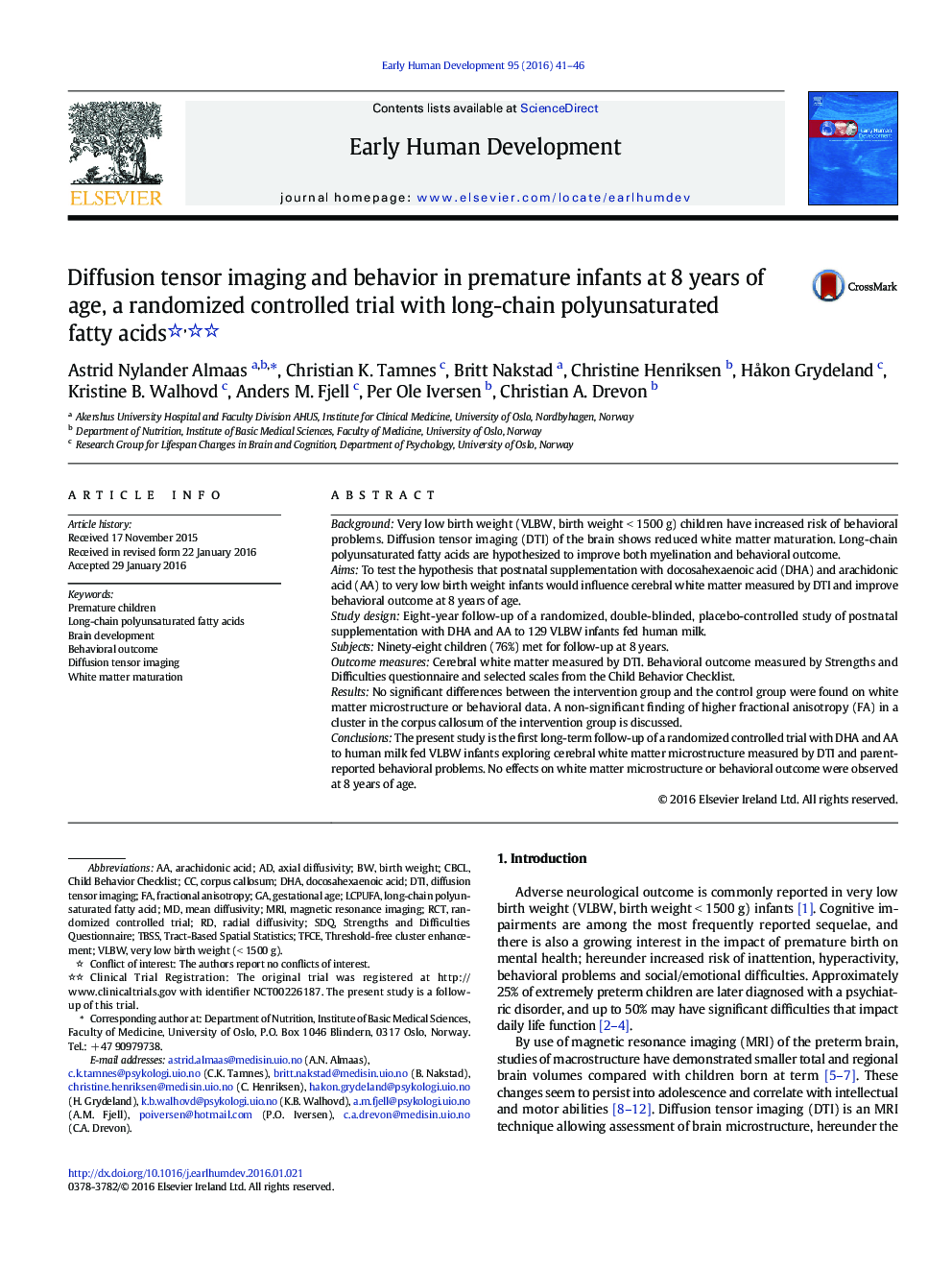| Article ID | Journal | Published Year | Pages | File Type |
|---|---|---|---|---|
| 3917682 | Early Human Development | 2016 | 6 Pages |
•Very low birth weight (VLBW) children have increased risk of behavioral problems.•Diffusion tensor imaging (DTI) of the premature brain shows reduced white matter maturation.•The long-chain polyunsaturated fatty acids docosahexaenoic acid (DHA) and arachidonic acid (AA) are hypothesized to improve both myelination and behavioral outcome.•This 8 year follow-up study of an RCT with postnatal DHA/AA-supplementation to VLBW infants is the first report on both brain microstructure measured by DTI and behavioral outcomes.•No significant effects of the supplementation were detected at 8 years of age.
BackgroundVery low birth weight (VLBW, birth weight < 1500 g) children have increased risk of behavioral problems. Diffusion tensor imaging (DTI) of the brain shows reduced white matter maturation. Long-chain polyunsaturated fatty acids are hypothesized to improve both myelination and behavioral outcome.AimsTo test the hypothesis that postnatal supplementation with docosahexaenoic acid (DHA) and arachidonic acid (AA) to very low birth weight infants would influence cerebral white matter measured by DTI and improve behavioral outcome at 8 years of age.Study designEight-year follow-up of a randomized, double-blinded, placebo-controlled study of postnatal supplementation with DHA and AA to 129 VLBW infants fed human milk.SubjectsNinety-eight children (76%) met for follow-up at 8 years.Outcome measuresCerebral white matter measured by DTI. Behavioral outcome measured by Strengths and Difficulties questionnaire and selected scales from the Child Behavior Checklist.ResultsNo significant differences between the intervention group and the control group were found on white matter microstructure or behavioral data. A non-significant finding of higher fractional anisotropy (FA) in a cluster in the corpus callosum of the intervention group is discussed.ConclusionsThe present study is the first long-term follow-up of a randomized controlled trial with DHA and AA to human milk fed VLBW infants exploring cerebral white matter microstructure measured by DTI and parent-reported behavioral problems. No effects on white matter microstructure or behavioral outcome were observed at 8 years of age.
